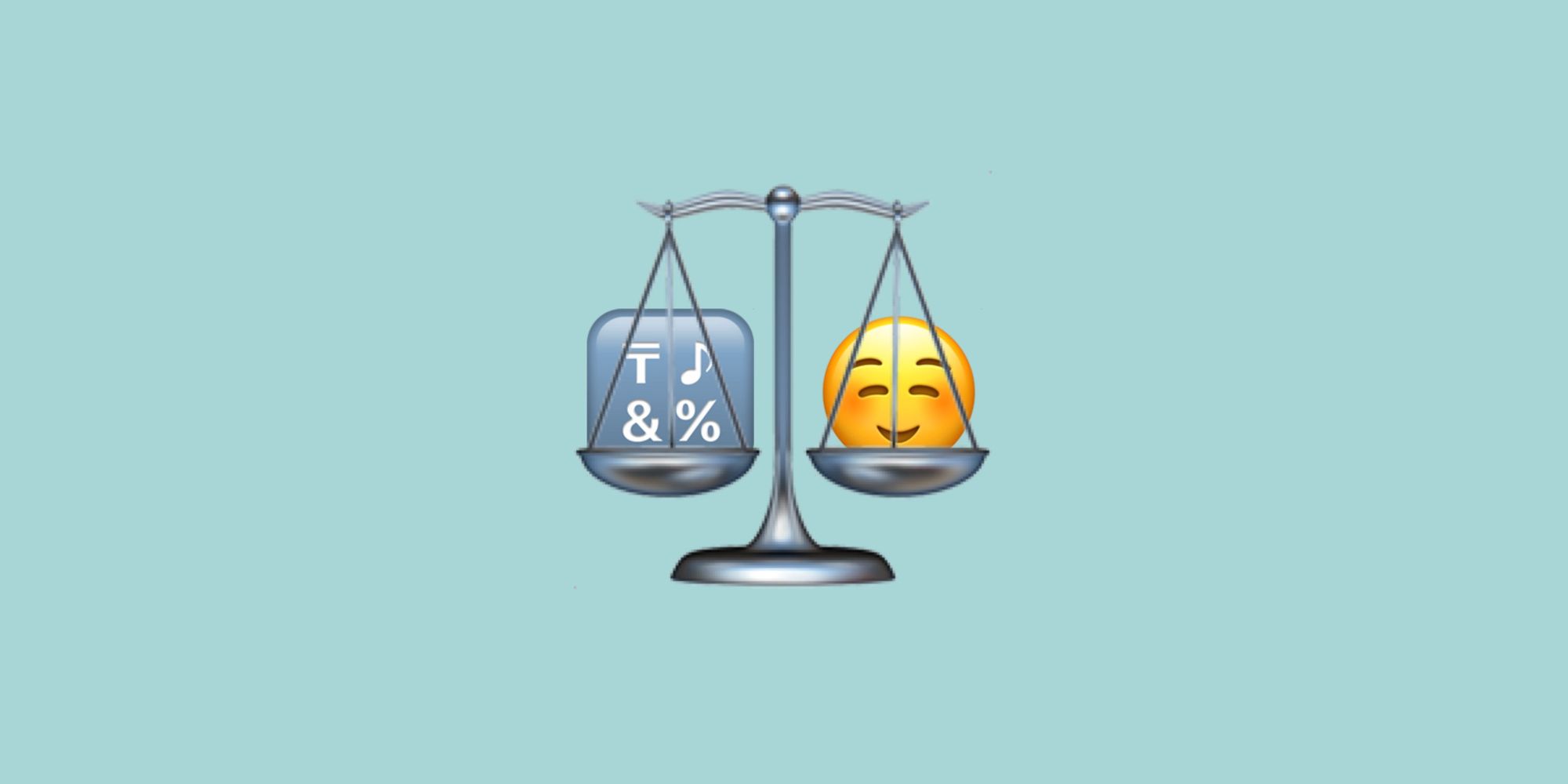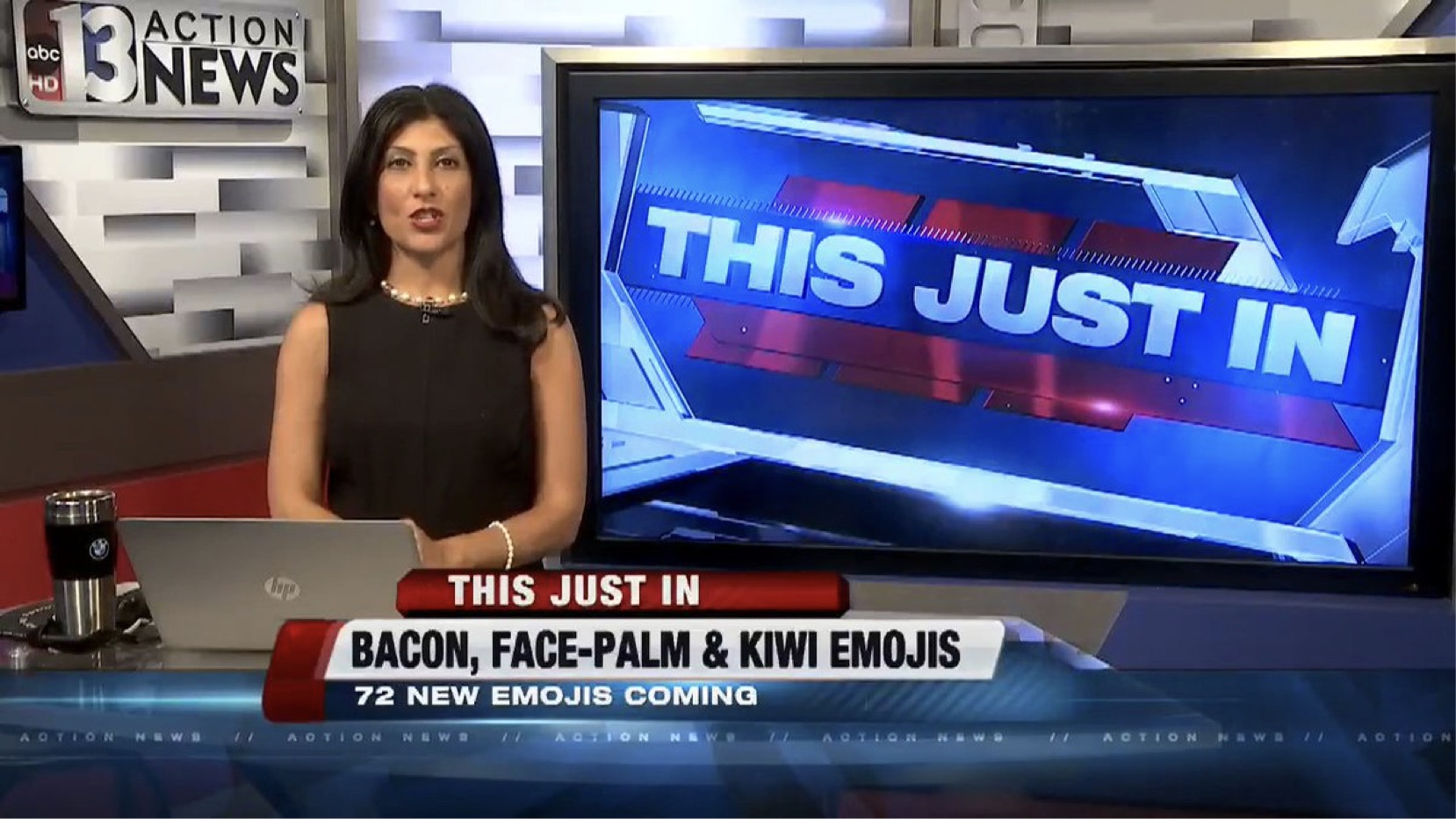Why There Were Two Emoji Updates In 2016

In the past, emoji updates were often referred to like this:
"There are 72 new emojis to be released in 2016, as part of Unicode 9.0."
This made sense, as the Unicode Consortium releases a list of new code points each year; and a number of these have emoji presentation. Unicode 9.0 had 7,500 new characters added, and 72 of those had emoji status.
Visually, the proportions of emoji and non-emoji additions in Unicode 9.0 look like this:

Above: Each 🔣 or ☺️ represents 100 new code points in Unicode 9.0.
Count how many new code points are included; check which are classified as emojis; and you know how many new emojis there are in an update to the Unicode Standard.
Or do you?

Above: New emojis are big news. Image: abc13 News.
The formula for counting "new emojis" breaks a little when including modifiers.
For instance; the aforementioned Unicode 9.0 update contained 72 new code points with emoji presentation, but 17 of those also support modifiers for skin tone.
That's an extra 85 emojis not counted in the initial tally, when five additional skin tones are counted for each of these.

Above: Only one new code point was required for these six emojis.
The terminology of referring to emoji updates by Unicode version is further stymied by the advent of Emoji ZWJ Sequences.
Emoji 4.0
In late 2016, Unicode released an emoji update which involved the introduction of zero new code points: Emoji 4.0.
This was the second emoji release of the year; with the first being Emoji 3.0 alongside Unicode 9.0 in June 2016.
The fact that Emoji 4.0 didn't require any additional code points meant it didn't need to wait around for the next full Unicode release planned for mid-2017.
The late-2016 update — called Emoji 4.0 — included some notable additions:
- 👩🔧 New Professions — ZWJ Sequences which combined:
- 👨 Man or 👩 Woman;
- plus objects such as 🔧 Wrench or 💻 Computer
- (plus skin tones for each profession)
- 🏳️🌈 Rainbow Flag — a ZWJ Sequence of:
- 🇺🇳 United Nations flag — a Flag Sequence of:
- Emoji Status granted to:
- ♀️ Female Sign
- ♂️ Male Sign
- ⚕️ Medical Symbol
- 🏽 Modifier Support — skin tones added to:
- 🕴️ Man in Business Suit Levitating
- 🛌 Person in Bed
- 🏌️ Person Golfing

Above: None of these emojis required new code points; and were released "off cycle" from a full Unicode release.
In total; 628 new emoji images came into existence in late 2016 without a single new code point being required.
This may be the future of emoji updates.
Emoji Version is the New Version
We have now reached the stage where emoji updates are best tracked via their Emoji Version; rather than their Unicode Version.[1]
It's not of particular importance to most people if the 👩🏫 Woman Teacher emoji needed new Unicode code points (it didn't), compared to the 🤰 Pregnant Woman emoji (it did).
The main details that we see people wanting to know are:
- 🤷♀️ Which new emojis are coming
- ⏱ When the new emojis are coming
- 👀 What the new emojis look like
In future, it's possible Emoji updates will simply coincide with each annual Unicode release; but there is nothing stopping off-cycle updates to the Emoji version; provided new code points aren't needed.[2]
Could this be the start of multiple emoji releases each year; or was Emoji 4.0 more of an exception? Time will tell.
Related
- What's planned for Emoji 4.0 (Late 2016)
- List of new emojis in Emoji 4.0
- Unicode Technical Report #51 ("Unicode Emoji")
Stay Updated
Get the latest emoji news direct to your inbox by subscribing to our free Emoji Wrap email:
👇 Sign up here 👇
Emojipedia will still take note of both; of course. In many ways they are intrinsically linked (especially as the bulk of new emojis still require code points to be approved); but expect to see future announcements referring to Emoji Version more commonly than the update to the Unicode Standard which includes the requisite code points ↩︎
Emoji 5.0 is currently in draft for presumed release in 2017. As this currently contains a number of emojis which require new code points; it seems therefore seems reasonable to assume that the full release of this update will need to coincide with Unicode 10.0 in mid-2017. ↩︎
